How to Allow Users to Apply Coupons in Payment/Product Order Forms

Want to know what works as the greatest incentive when you want someone to make a purchase? The answer is “discounts”. And, do you know how you can offer discounts for the purchase of various combinations of products at the same time seamlessly?
Well, the answer is by offering coupons. Let’s see how that works.
Use cases
- By allowing users to apply coupons, you can offer them discounts of many kinds. For example, promotional offers, occasional offers, offers on a particular amount of purchase, offers on a particular product, or a particular combination of products, etc.
- You can offer one or more coupons at the same time if your customer fulfills the respective requirements for each coupon.
- You can have one coupon for all, some, or one form. Similarly, you can have a separate coupon for each form.
- By changing the status of a coupon, you can dictate when to keep an offer available or not.
- You can offer discounts both in percentage and in fixed amount.
How to allow users to apply coupons
This tutorial is created with Fluent Forms, a contact form builder plugin for WordPress.
If you want to offer a coupon on any purchase, go to the form editor of the specific form on which you want to make the coupon available. Then simply add a Coupon input field from the Payment Fields.
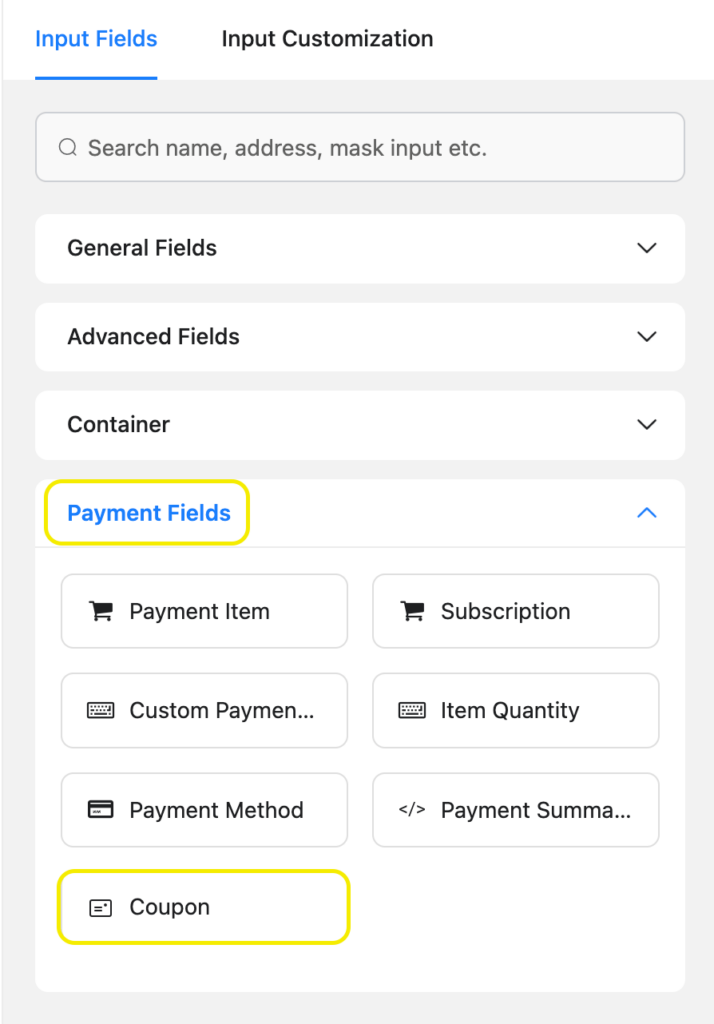
Let’s see how the coupon is integrated into the form.
Step 1:
From your left-hand sidebar, go to Fluent Forms. Click on Global Settings from the panel that expands.

Step 2:
From global settings, go to Payment → Coupons. Then click on Add New Coupon in the upper right corner. A new window named Add a New Coupon opens up.
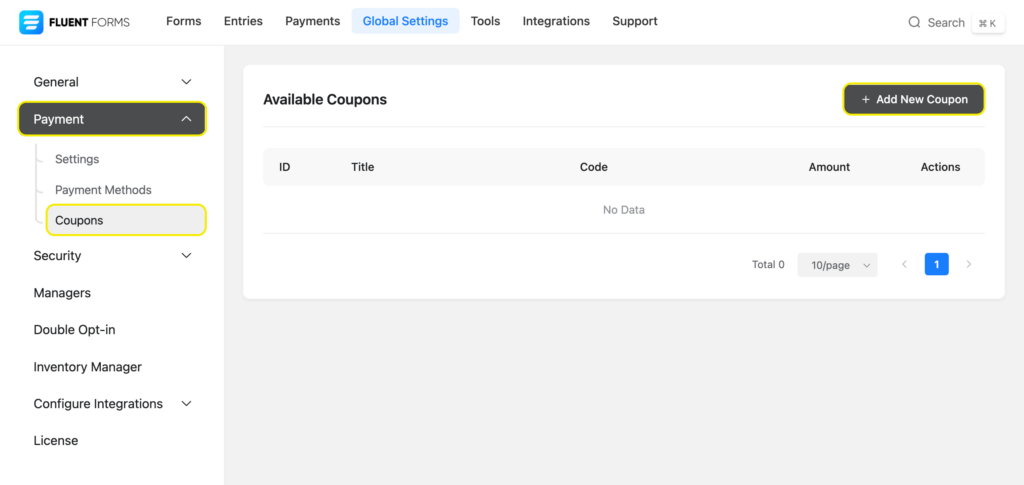
Step 3:
Now add a Coupon Title and a Coupon Code. This is the code that your customers will enter in the form’s coupon field. Only alphanumeric characters are allowed as coupon codes.
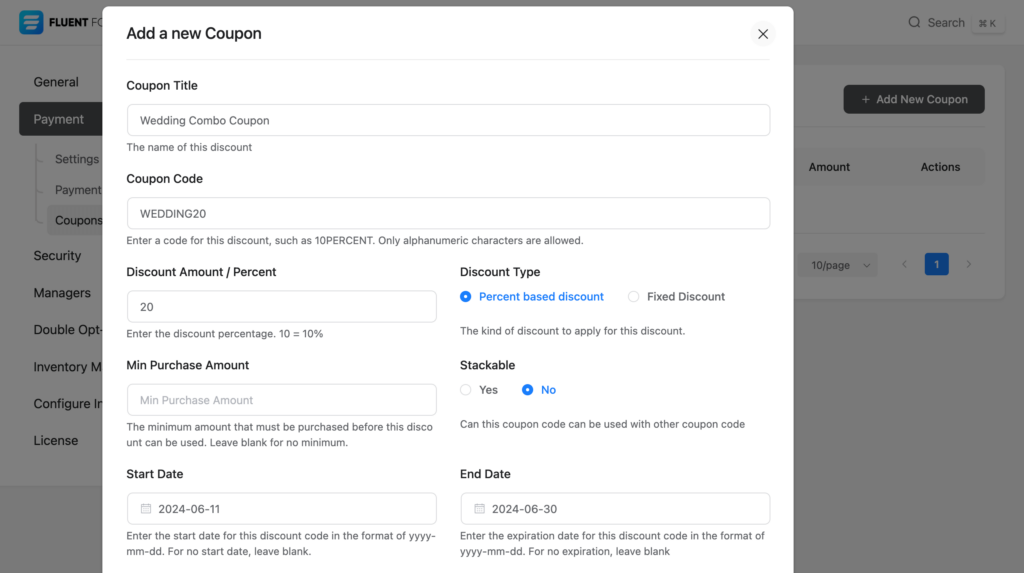
Select Discount Type, whether you want a percent-based discount or fixed discount. Then enter the Discount Amount/Percent.
If you want the coupon to be applicable for a Minimum Purchase Amount, enter the amount. If you want to allow your customers to use more than one coupon for a form, check Yes under Stackable. If you want to allow only one coupon per form, check No.
If you want the coupon to be valid for a certain time frame, enter the start date and the end date.
Under Applicable Forms, select the titles of the forms you want the coupon to be applicable to. Leave the box empty if you want the coupon to be applicable to all forms. Set a coupon limit if you want a limited use of the coupon.
Choose a Failed Message type, and you can edit the default message from there to appear on the forms when customers enter a coupon code that they don’t meet the criteria for.
Select Active as the Status of the coupon. You can change it to inactive anytime you don’t want to offer the coupon. Finally, Save Coupon and you’re done.
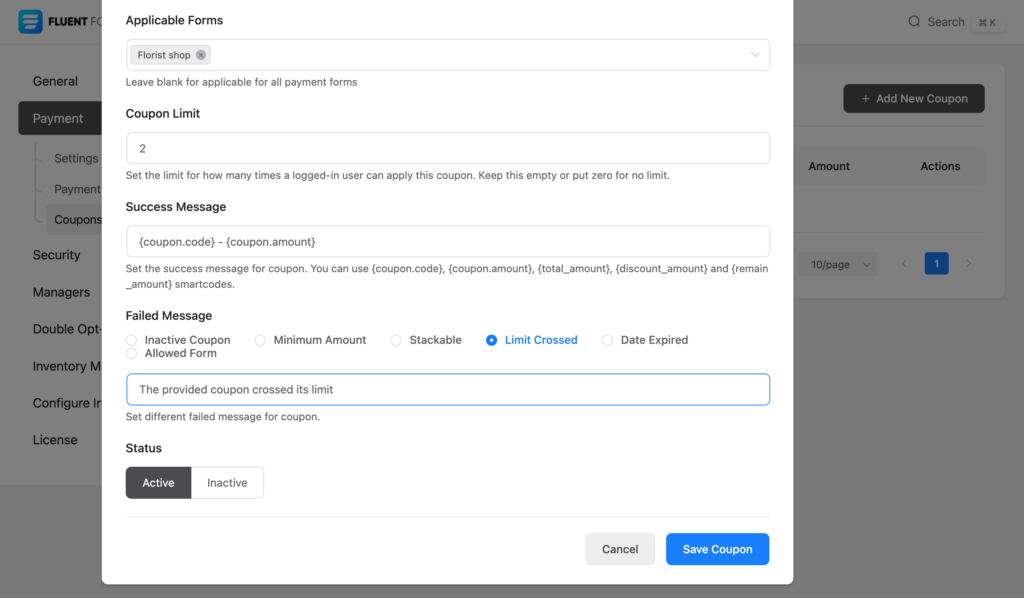
If customers enter the coupon code in the coupon field and click on Apply Coupon, the coupon discount amount appears in the dynamic payment summary like this.
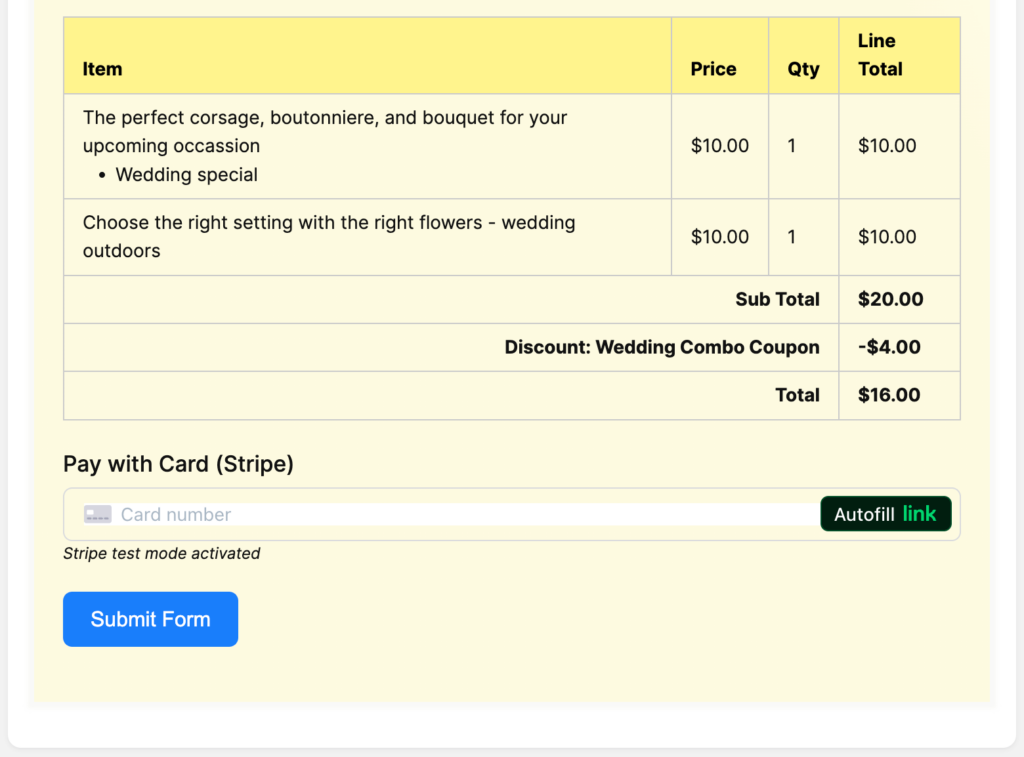
In our flower order form, we’re offering a wedding combo offer via a coupon. To get the offer, customers have to order both a wedding special bouquet and an outdoor wedding venue decoration. Conditional logic is applied in the form in a way that when someone selects both, the field wedding combo coupon appears.
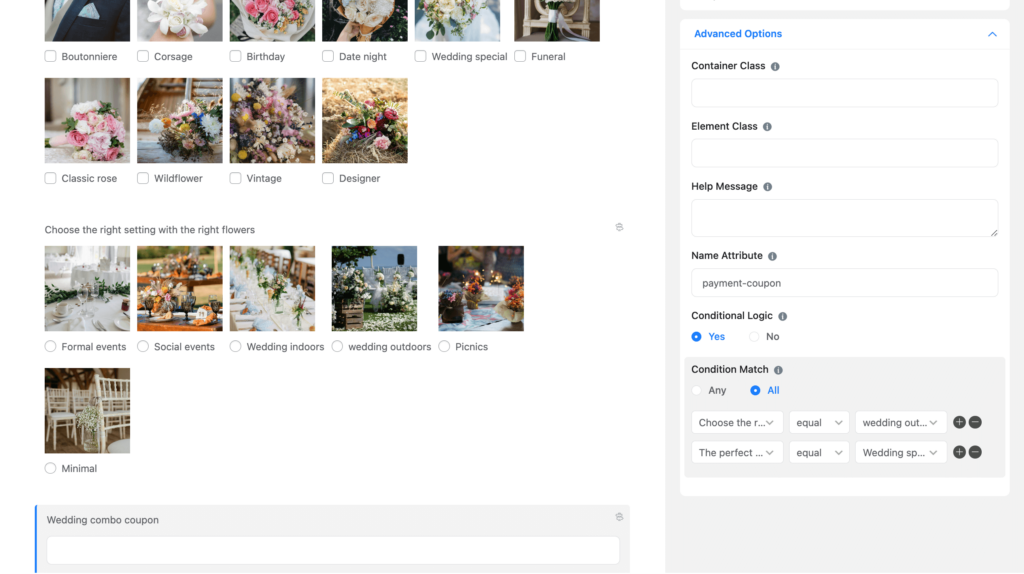
This is what it looks like to customers when they select both items for purchase.
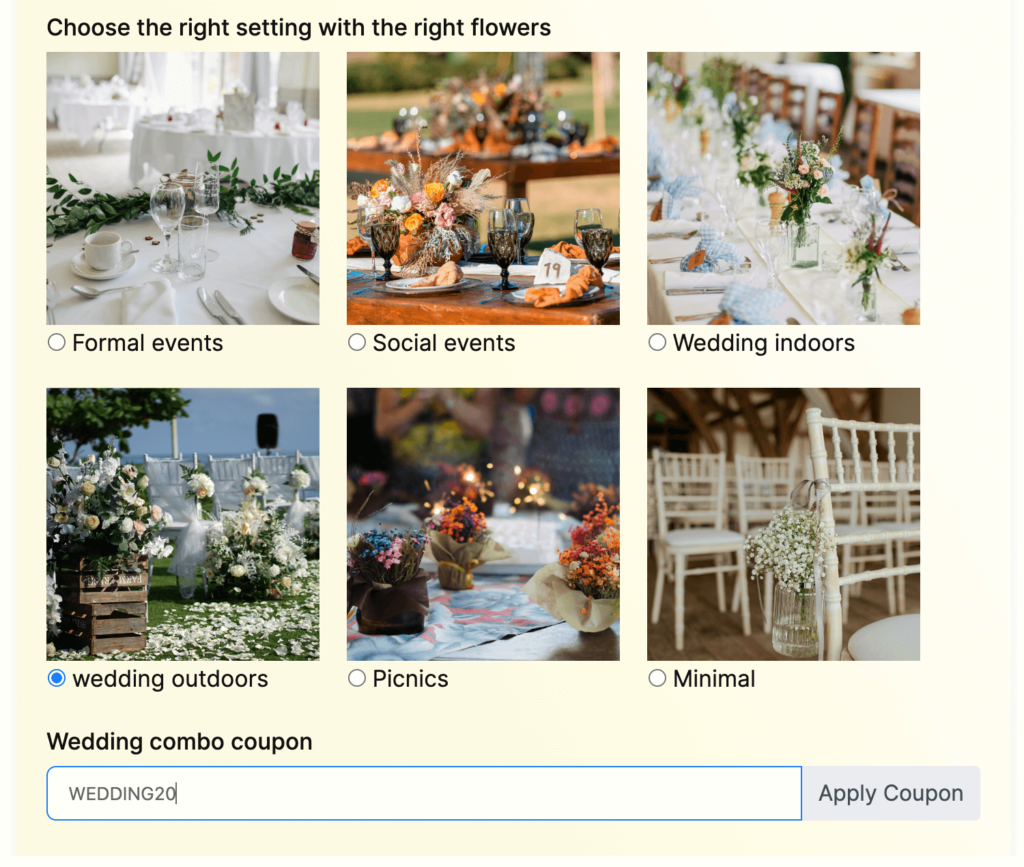
Related features
Payment
You can accept both one-time payments and subscription payments via Fluent Forms. The process is secure and hassle-free. It allows integrations with multiple payment gateways such as Stripe, PayPal, Paystack, RazorPay, and Mollie, which lets your customers make their payments using cards.
Inventory
Fluent Forms allows you to have global inventory management. You only have to update the inventory when you restock an item. The total number of each item is shown on the forms. Once someone orders an item, the inventory gets auto-updated (the quantity in which the item was ordered gets auto-deducted from the available amount). The next person who tries to order the same product sees the updated amount as the available quantity.

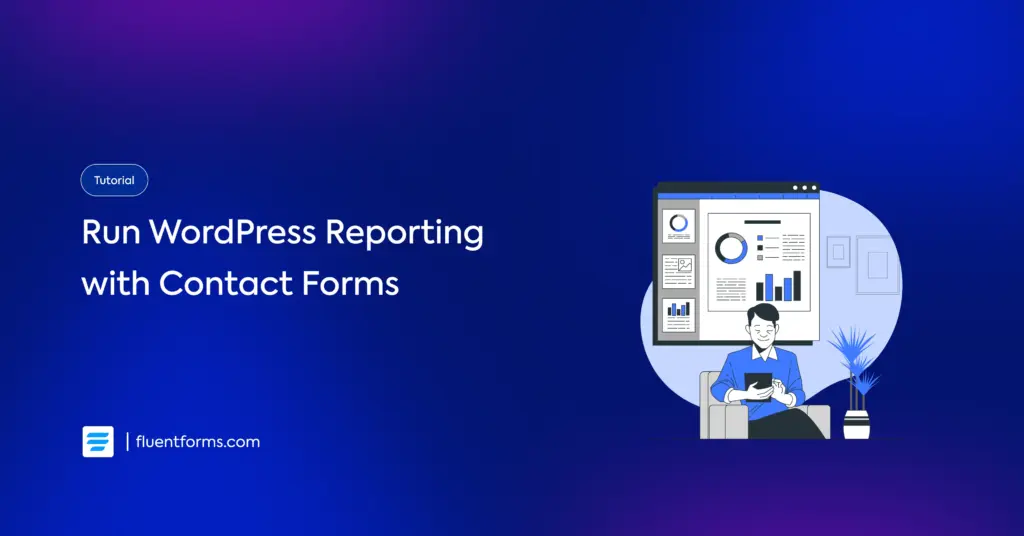
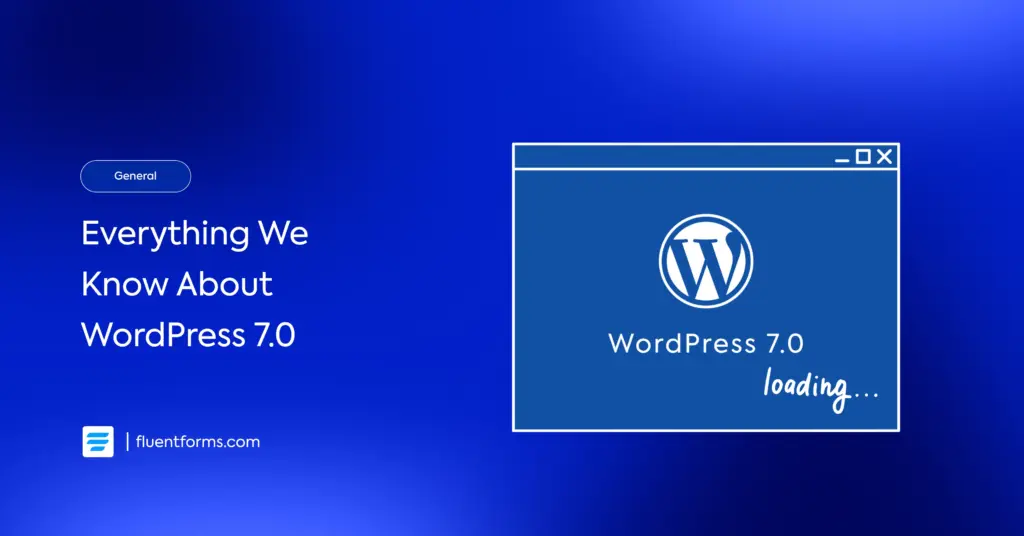




Leave a Reply